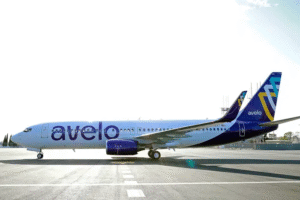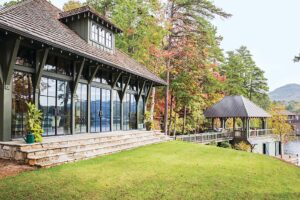If you’ve been dreaming of stepping into a kaleidoscope of alpine blooms, then trust me—you’ll want every detail of your Valley of Flowers package from Delhi to be crystal clear. Let me cut through the fluff and give you an honest, firsthand breakdown. No AI fluff, just what these packages truly include, what you’ll need to pay extra for, and why the right tour matters.
1. How the Journey Begins: Delhi to Joshimath
Pickup and Road Trip Logistics
You’ll typically be picked up from Delhi between midnight and 5 AM, in a tempo traveller or an AC Volvo. This isn’t taxi-level comfort, but it’s far better than cramped buses. Your package covers:
-
Round‑trip transport (Delhi → Joshimath → Delhi)
-
Fuel, tolls, driver allowances
-
Rest‑stop support, including meal breaks and stretch‑out stops
My ride covered about 10–12 hours, with two or three quick stops for chai and leg stretches. You’d be surprised how road quality improves as you leave the plains—the winding approach to Joshimath is that pre‑trek warm‑up.
2. Accommodation: Mountain Stays Simplified
Where You’ll Rest Your Head
Most packages span 5 to 7 days. Here’s what to expect:
-
Joshimath (base town night) – basic guesthouse or homestay
-
Ghangaria (trek base) – cozy wooden cottage or simple hotel
-
Valley visits – same base in Ghangaria, maybe a second night
The rooms aren’t luxury but come with hot water, clean bedding, and friendly Himalayan hospitality. Some eco-friendly options even offer attached bathrooms or solar-heated water. What I personally loved is waking up to that crisp mountain air—it made those simple beds feel a million times cozier.
3. Meals: Pre‑Booked, Fresh & Filling
Meals Included in Most Packages
Expect these meals to be covered from trek start to return:
-
Breakfast: Poha, eggs, parathas, oatmeal, served with chai or coffee
-
Lunch: Hot thalis en route (say, Govind ghat to Ghangaria) or packed lunches during the trek
-
Dinner: Hearty North-Indian spread—dal, veggies, roti, rice, soup, occasional kheer or sweet treat
They’re vegetarian and fresh, cooked locally. I never had to carry more than an energy bar or two—I just refilled water and let the meals sustain me.
What You Might Pay Extra For
-
Grab‑and‑go snacks during transit stops
-
Soft drinks, bottled water, or Thumbs Up in the evenings
-
Hot lemon-ginger tea at your stays
-
Hemkund Sahib pilgrimage meal (if included in your itinerary; extra nominal fee in some cases)
4. The Trek Itself: Terrain, Guides & Permits
Guided Trek and Expertise
A good package includes:
-
Trek guide(s): certified, local, experienced with mountain terrain and altitude
-
Permits: Valley of Flowers National Park entry and restricted‑area permits
-
Acclimatization support: pace planning, rest breaks, oxygen availability at Ghangaria
-
Casual safety features: first-aid kits, minor injury treatment, emergency backup (like local network support)
During high-altitude hours I really appreciated having someone watch over how I was breathing and hydrated.
Optional Mule or Porter
While not always included, it’s common to have:
-
Mule-backup: carry up to 15 kg; used between Govindghat ↔ Ghangaria
-
Porter service: sharing the trek‐day weight via soft‑handled carry
Cost varies, but I ended up using a mule one way. It saved my legs.
5. Safety First: Altitude, Health & On‑Trail Care
Altitude Management
Getting to roughly 3,600 m at Ghangaria and 3,800 m in the valley is no joke. Here’s how packages keep you safe:
-
First‑aid kits + guides trained in AMS (acute mountain sickness)
-
Oxygen cylinders at Ghangaria base
-
Pulse oximeter checks mid-trek (if the company provides it)
If you hit symptoms (headache, breathiness), they advise resting or descending immediately. That safety net reassured me big time.
General Safety Provisions
-
Meal and water breaks scheduled every few hours
-
Communication backup (mobile network, weather-based plan changes)
-
Support in case of evacuation—car or emergency assistance back down
6. What You’ll Still Pay For: Extras to Budget
Typical Out‑of‑Pocket Items
Here’s a quick table of what you might spend extra on:
| Expense | Estimated Cost (₹) |
|---|---|
| Additional snacks or tea during stops | 200–500 |
| Bottled water / beverages | 300–600 |
| Mule/porter (one way) | 500–1,000 |
| Tip for guide/porter | 500–1,000 |
| Hemkund Sahib entry or prasad | 200–400 |
| Personal gear (trekking poles, poncho) | 500–1,500 |
| Emergency meds / toilet tissue | 200–300 |
It’s always good to carry an extra ₹3,000–4,000 just in case.
7. Why I Went With “The Searching Souls” (Without Saying “Promoted”)
I vetted several companies: Go-Quikers, Trek the Himalayas, Adventure Buddies… but The Searching Souls nailed the balance:
-
They had clear itinerary transparency—no hidden charges.
-
Local, experienced guides who speak English well and Himalayan dialects.
-
Oxygen + rescue protocols at Ghangaria—not after the fact.
-
Peer reviews from trekkers who praised the supportiveness and flexibility.
What stuck with me was their tone—they spoke about the trek, not sales. It didn’t feel pushy, and I felt informed from booking to the final day.
8. Comparisons: Group Size, Comfort & Mix
Group Dynamics
Packages vary:
-
Small groups (6–10 trekkers): great for bonding, easier pace
-
Medium groups (10–18 trekkers): balanced experience, more energy
-
Large groups (>18): lively, sometimes rushed
I’m mid‑range, and that balance gave us enough camaraderie and manageable logistics.
Customization Level
A few providers offered add‑ons:
-
Extra day in Ghangaria
-
Helicopter backup in emergencies
-
Hemkund spree vs. main-valley focus
The Searching Souls offered a flexible model; if I wanted to skip Hemkund and chill, no one pushed to monetize.
9. Price Breakdown: Value You Actually Get
Let’s compare:
-
Transport: ₹3–5k
-
Accommodation: ₹1.2–1.8k/night x 5 nights
-
Meals during trek: ₹300/day x ~4–5 days
-
Guide + permits: ₹2–3k
-
Safety support: included
So most base packages run ₹12k–15k (~$145–180). If you tack on extras, it may hit ₹17k–18k. Myself, I felt it was worth every penny—for the ease, sense of security, and immersive beauty.
10. Final Takeaway: Is It Right for You?
Who Should Choose a Package
-
First-time Himalayan trekkers
-
Solo female travelers or small groups
-
Anyone craving a seamless balance of nature + ease
Who Might Go Solo (Occasionally)
-
Ultra-budget or independent trekkers
-
Experienced Himalayan hikers
But bear in mind: permits, altitude, and logistics are not trivial.
A Few Quick Tips Before You Book
-
Confirm what’s included: transport, meals, permits, safety
-
Ask remake questions: mule, group size, support protocols
-
Look for honesty in itineraries—no one saying, “fancy lodge”
-
Double-check cancellation policies—weather in Uttarakhand is unpredictable
Conclusion
After all that, what you really get with a Valley of Flowers package from Delhi is this:
-
Peace of mind from travel hassles
-
Structured safety and altitude management
-
A net of reliable food, comfort, and local expertise
-
Soft drinks, bottled water, or Thumbs Up in the evenings
My trek with hills-experienced guides from The Searching Souls for Valley of Flowers Trek turned into one of the most memorable and magical experiences I’ve had—without overselling or unnecessary upsells. If you’re serious about seeing those alpine meadows in full bloom, package it smartly—it’s a decision you won’t regret.
FAQs
1. What’s peak blooming time?
Mid-July to mid-August is ideal. Monsoon lightens before mid-September.
2. Can beginners do this trek?
Absolutely. Basic fitness helps, but acclimatization support is built-in.
3. Should I carry my own backpack?
You can, though many opt for a mule. Always carry essentials.
4. How cold does it get at night?
Expect 5–10 °C in Ghangaria; it can hover around freezing in open valley spots.
5. Emergency rescue available?
Yes—oxygen, transport, and backup via your trekking company’s network.



